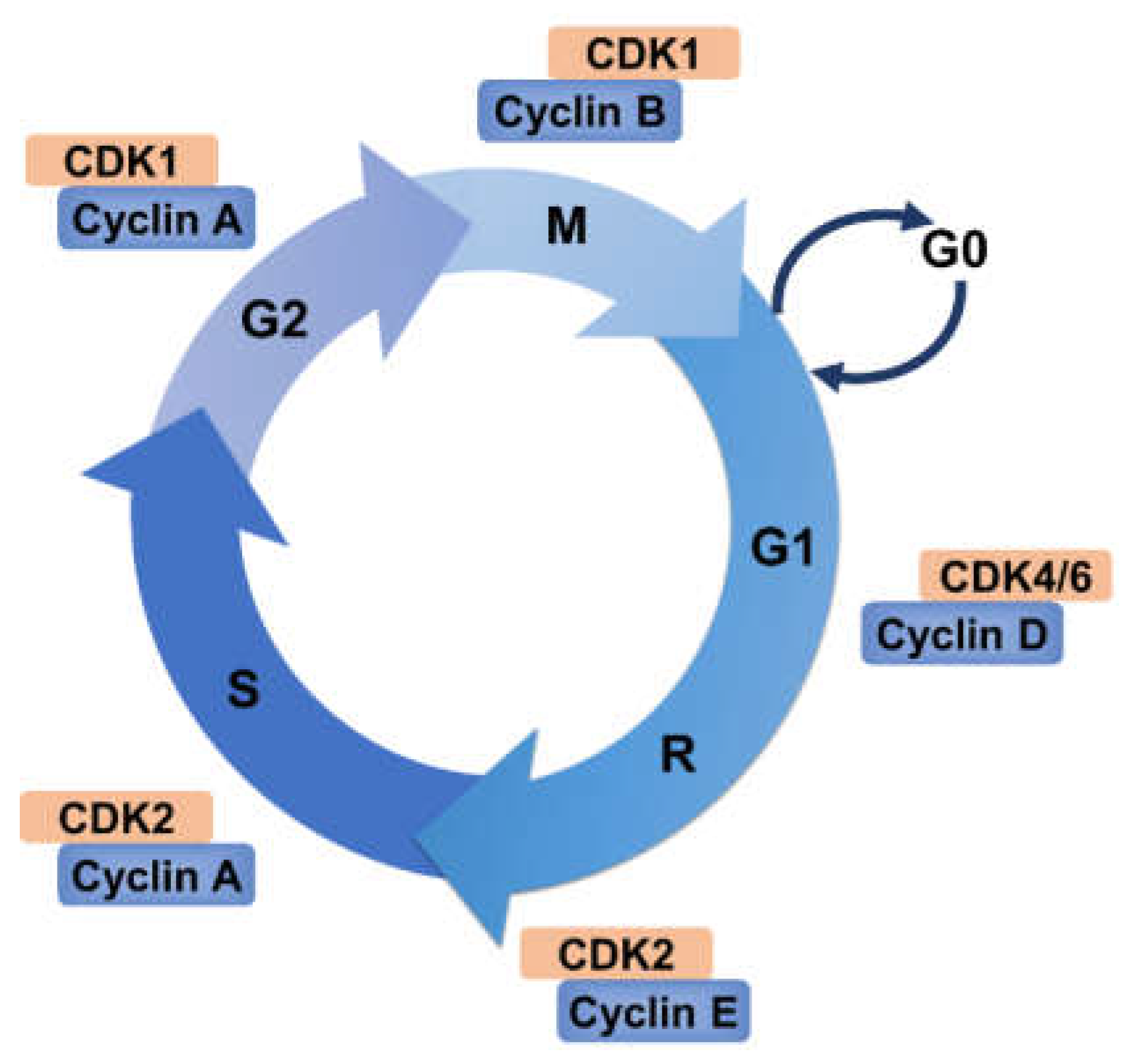
When it comes to understanding the intricacies of cancer, delving into the realm of cell cycle regulation is essential. The cell cycle is a complex process that controls the growth and division of cells, ensuring precise and orderly replication. However, in cancer, this regulation goes awry, leading to uncontrolled cell growth and proliferation.
In this article, we will explore 18 astonishing facts about cell cycle regulation in cancer. From the role of tumor suppressor genes and oncogenes to the mechanisms that lead to cell cycle dysregulation, we will dive into the fascinating world of cancer biology. Understanding these facts will not only provide insights into the causes and progression of cancer but also shed light on potential therapeutic targets and strategies for treatment.
Key Takeaways:
- Cancer cells have a messed-up cell cycle, leading to uncontrolled growth. Understanding this can help develop better treatments for cancer.
- Genes that control the cell cycle are often broken in cancer, causing chaos. Researchers are working on new therapies to fix this and fight cancer.
Cancer cells have a deregulated cell cycle.
In cancer, the normal process of cell cycle regulation is disrupted, leading to uncontrolled cell division and tumor formation.
Key regulators of the cell cycle are mutated in cancer.
Genes encoding proteins that control the progression of the cell cycle, such as p53 and cyclin-dependent kinases, are frequently mutated in cancer, contributing to the loss of cell cycle control.
The G1 checkpoint is crucial for cell cycle regulation.
During the G1 phase of the cell cycle, the decision is made whether a cell should proceed to divide or enter a dormant state. Disturbances in the G1 checkpoint can lead to uncontrolled cell growth and the development of cancer.
Oncogenes promote cell cycle progression.
Activated oncogenes, such as Ras and Myc, drive the cell cycle forward, bypassing normal regulatory mechanisms and stimulating uncontrolled cell proliferation.
Tumor suppressor genes help maintain cell cycle integrity.
Tumor suppressor genes, like p53, BRCA1, and BRCA2, play a critical role in preventing the formation of cancer by regulating the cell cycle and promoting DNA repair.
Abnormalities in DNA repair genes contribute to cancer development.
Defects in DNA repair mechanisms, including genes involved in homologous recombination and mismatch repair, can result in the accumulation of genetic mutations and contribute to the initiation and progression of cancer.
Chemotherapy targets the cell cycle.
Many chemotherapy drugs work by interfering with the cell cycle, either by inducing cell cycle arrest or by preventing DNA replication and cell division.
The cell cycle is regulated by cyclin-dependent kinases (CDKs).
CDKs are key enzymes that control the progression of the cell cycle by phosphorylating target proteins involved in cell cycle regulation.
Dysregulation of CDK activity is a hallmark of cancer.
In cancer cells, the activity of CDKs is often elevated, promoting uncontrolled cell division and tumor growth.
Tumor microenvironment affects cell cycle regulation.
The environment surrounding cancer cells, including factors like growth factors, oxygen levels, and cell-cell interactions, can influence cell cycle progression and impact cancer development.
Telomeres play a role in cell cycle control.
Shortening of telomeres, which protect the ends of chromosomes, is associated with aging and can contribute to genomic instability and the development of cancer.
Evasion of cell death mechanisms is common in cancer.
Cancer cells often acquire the ability to evade programmed cell death (apoptosis), allowing them to survive and continue dividing despite DNA damage or other abnormalities.
Epigenetic modifications impact cell cycle regulation in cancer.
Changes in DNA methylation, histone modifications, and chromatin structure can alter the expression of genes involved in cell cycle regulation, contributing to the development of cancer.
The immune system plays a role in cell cycle control.
Immune cells can recognize and eliminate cancer cells through mechanisms involving cell cycle arrest, apoptosis, and immune surveillance.
Metabolic reprogramming affects cell cycle progression in cancer.
Cancer cells undergo metabolic changes that support their high proliferation rate, often involving increased glucose uptake (Warburg effect) and altered cellular energy metabolism.
Genomic instability is a hallmark of cancer.
Mutations and chromosomal abnormalities disrupt normal cell cycle regulation and contribute to genomic instability, a characteristic feature of cancer cells.
Targeting cell cycle regulators shows promise in cancer therapy.
Novel therapies designed to specifically target aberrant cell cycle regulation in cancer are being developed and hold great potential for improving treatment outcomes.
Understanding cell cycle dysregulation is critical for cancer research.
Further investigation into the mechanisms underlying cell cycle dysregulation in cancer is essential for developing new strategies to prevent, diagnose, and treat this devastating disease.
Conclusion
In conclusion, the regulation of the cell cycle is a complex and crucial process in maintaining the orderly growth and division of cells. However, when this regulation goes awry, it can lead to the development and progression of cancer. Understanding the mechanisms behind cell cycle regulation in cancer is essential for developing effective treatments and interventions.Researchers have made significant strides in uncovering the various factors that contribute to cell cycle dysregulation in cancer. From genetic mutations to disrupted signaling pathways, these discoveries have paved the way for targeted therapies that specifically address the underlying issues in cancer cells.By studying the cell cycle and its regulation in the context of cancer, scientists are gaining valuable insights into the disease’s behavior and progression. This knowledge is instrumental in developing innovative strategies to detect cancer early, predict its outcome, and devise personalized treatment plans.With ongoing advancements in research and technology, we are inching closer to unraveling the mysteries of cell cycle regulation in cancer. By deepening our understanding of this intricate process, we can contribute to the development of more effective and targeted therapies, ultimately improving the lives of cancer patients worldwide.
FAQs
1. What is cell cycle regulation?
Cell cycle regulation refers to the processes that govern the orderly progression of a cell through the different phases of its life cycle – including growth, DNA replication, and division.
2. How is cell cycle regulation disrupted in cancer?
In cancer, cell cycle regulation is disrupted due to genetic mutations and alterations in signaling pathways that control cell growth and division. This leads to uncontrolled cell proliferation and the formation of tumors.
3. What are the key factors involved in cell cycle dysregulation in cancer?
Several factors contribute to cell cycle dysregulation in cancer, including oncogenes, tumor suppressor genes, cyclins, cyclin-dependent kinases (CDKs), and checkpoints that monitor cell cycle progression.
4. How is the study of cell cycle regulation in cancer beneficial?
Studying cell cycle regulation in cancer helps us understand the underlying mechanisms of the disease, identify potential therapeutic targets, and develop more effective and personalized treatment strategies.
5. Can cell cycle dysregulation be reversed?
While it is challenging to completely reverse cell cycle dysregulation in cancer, targeted therapies that specifically address the dysregulated pathways can help slow down tumor growth and improve patient outcomes.
Unraveling cell cycle regulation in cancer is just the beginning of our journey into understanding this complex disease. Explore the roles of oncogenes, which drive uncontrolled cell growth and division. Discover how tumor suppressor genes act as guardians against cancer development, and learn about the fascinating process of apoptosis, or programmed cell death, and its implications in cancer treatment.
Was this page helpful?
Our commitment to delivering trustworthy and engaging content is at the heart of what we do. Each fact on our site is contributed by real users like you, bringing a wealth of diverse insights and information. To ensure the highest standards of accuracy and reliability, our dedicated editors meticulously review each submission. This process guarantees that the facts we share are not only fascinating but also credible. Trust in our commitment to quality and authenticity as you explore and learn with us.


